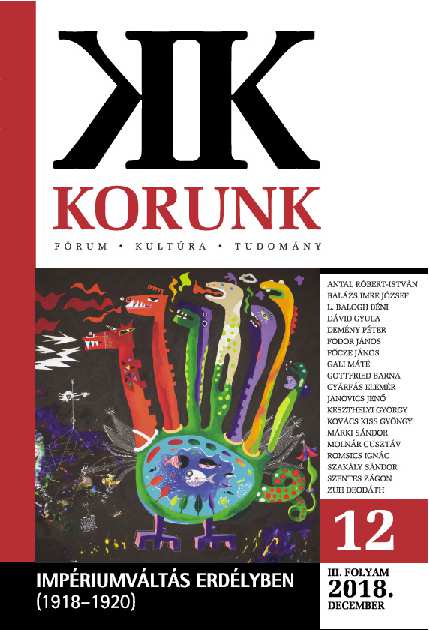Románia nyugati határainak kijelölése a párizsi békekonferencián
The Staking of Romania’s Western Borders at the Paris Peace Conference
Author(s): Ignác RomsicsSubject(s): Pre-WW I & WW I (1900 -1919), Interwar Period (1920 - 1939)
Published by: Korunk Baráti Társaság
Keywords: Romania’s western borders; Paris Peace Conference; Grand Trianon pavilion of Versailles; 4th June 1920
Summary/Abstract: Ignác Romsics’ essay deals with the staking of Romania’s western borders by the Paris Peace Conference in 1919-1920. After presenting the structure and the functioning of the Peace Conference, the question of the Banat is examined. Following the hearing of the Romanian and the Yugoslav Peace Delegations, the representatives of the Great Powers (the United States, Great Britain, France and Italy) decided for the partition of the region. The western strip (about 1/3 of the whole territory), inhabited mostly by Serbians, went to Yugoslavia, the middle and eastern 2/3 became part of Romania. In the next part of his essay, the author focuses on the stakeout of the new Romanian-Hungarian frontier. Although the Romanian delegation insisted on the line promised to Romania in 1916 by the Entente powers, the Peace Conference modified it in the favor of Hungary. In spite of that, the decision makers handed over not just areas that were inhabited predominantly by non-Hungarian ethnic groups but also cut off substantial areas that were primarily Hungarian-inhabited. These latter areas included, in the west, the district centered around Szatmárnémeti (Satu Mare), Nagyvárad (Oradea) and Arad; in the east, the so-called Szeklerland. Altogether, the whole area of 102,787 square kilometers acquired from Hungary had a population of approximately five and one-half a million, of whom 3,208,000 were Romanians, 1,353,000 were Hungarians, and 544,000 were Germans (census of 1930). The Hungarian Peace Delegation was confronted with this settlement only in January 1920. In the last section of the essay those counter-arguments are treated by which the representatives of Hungary tried to rebut the above border proposals. Their efforts remained, however, unsuccessful. The peace treaty was signed on 4th June 1920 in the Grand Trianon pavilion of Versailles, and the Hungarian National Assembly gave its formal assent to it on 13 November 1920.
Journal: Korunk
- Issue Year: 2018
- Issue No: 12
- Page Range: 42-51
- Page Count: 10
- Language: Hungarian

